Clidemia hirta (L.) D. Don
| Etymology | Genus | After Klidemi, a Greek botanist |
|---|---|---|
| Species | Hairy; the entire plant is covered with hairs | |
| Family | Melastomataceae | |
| Synonyms | Melastoma hirtum L., Clidemia elegans (Aubl.) D. Don | |
| Common Names | Koster's Curse, Clidema, Soap Bush | |
| Status | Exotic: Naturalised | |
| Form | Herb | |
| Native Distribution | Tropical America | |
Diagnostics:
Clidemia hirta is a very common herb with a shrubby habit, and frequently found on forest edges. One thing unique about this plant is that every part of it is covered with dense hairs; from the leaves to the stems and even the fruits. The leaves are also quite recognisable, having deeply furrowed secondary and tertiery veins.
Interesting Facts:
In the 1880s, a guy named Koster accidentally introduced Clidemia hirta to a coffee plantation in Fiji (Nelson, 2010). It spread throughout the island after that, thereby becoming a curse of sorts, hence leading to the common name Koster's Curse. According to PIER (1999), it is a high risk weed in many Pacific Islands, including Hawaii. Its success in spreading over wide areas is aided by birds which eat the fruits and dispersed the seeds.The Koster's Curse is so far the only exotic species able to penetrate into the tall secondary and primary forests of Singapore (Teo et al., 2003). Even so, it is only found at sites of human disturbances; at the edge of trails and construction sites.
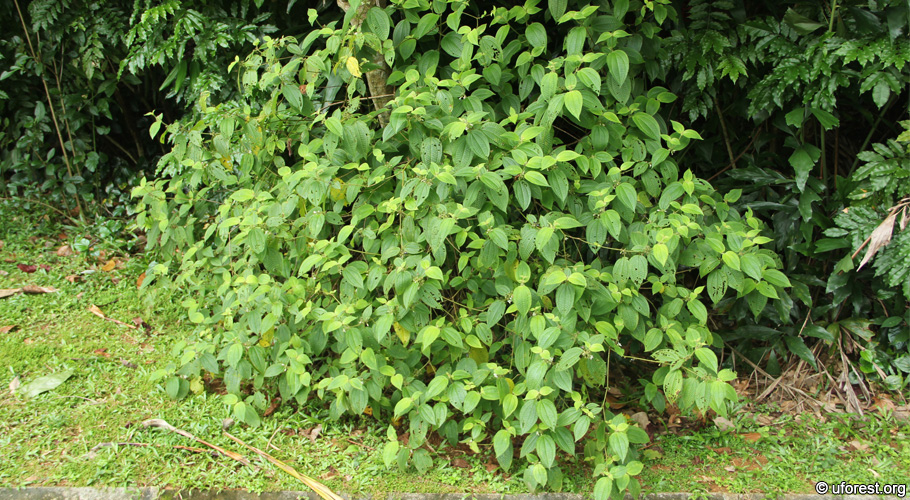
The Koster's Curse, a very herb that grows at forest edges.
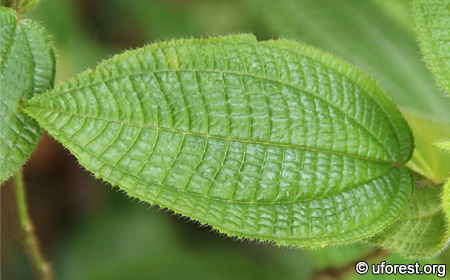
Leaves have 5 main secondary veins with also obvious tertiery veins.
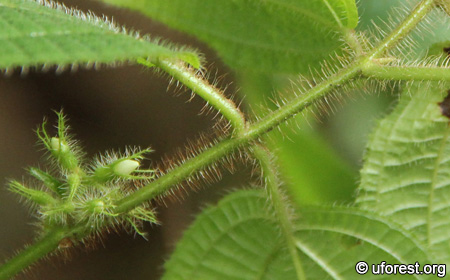
The stem also have dense long hairs.
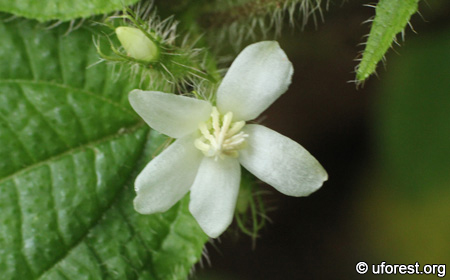
The flowers are small and white.
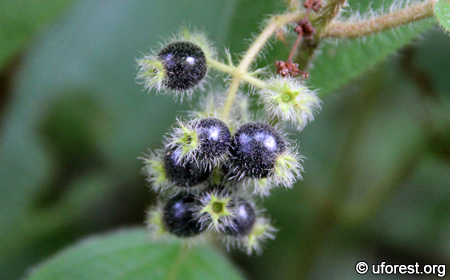
Fruits are dark purple and hairy.
References
Nelson R. 2010. "Koster's Curse" (OnLine) UntamedScience. http://www.untamedscience.com. Accessed on 9-Mar-2013.PIER (1999) Clidemia hirta. Pacific Island Ecosystem at Risk (PIER), Institute of Pacific Islands Forestry. http://www.hear.org/pier. Accessed on 9-Mar-2013.
Teo DHL, HTW Tan, RT Corlett, CM Wong & SKY Lum. (2003) Continental rain forest fragments in Singapore resist invasion by exotic plants. Journal of Biogeography, 30: 305-310.
Author: Siyang
Posted: 2013-03-09 / Modified: 2017-12-25
Google Ads